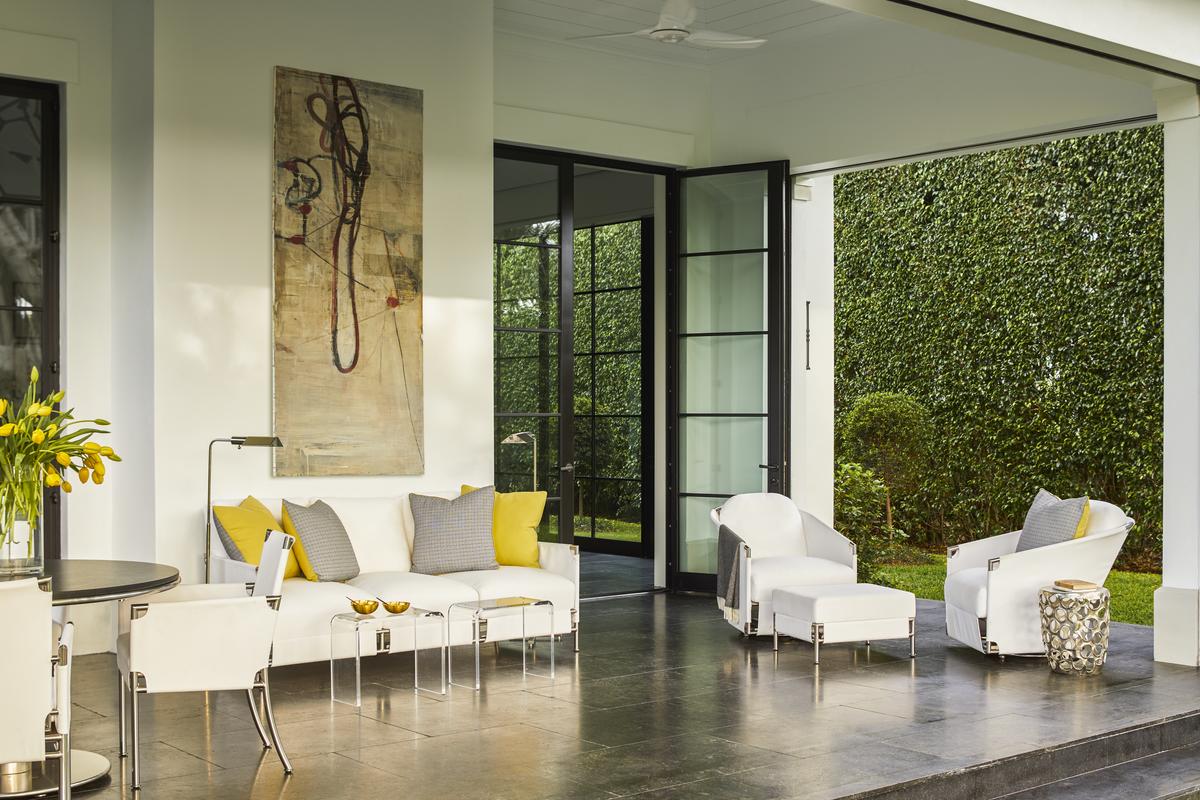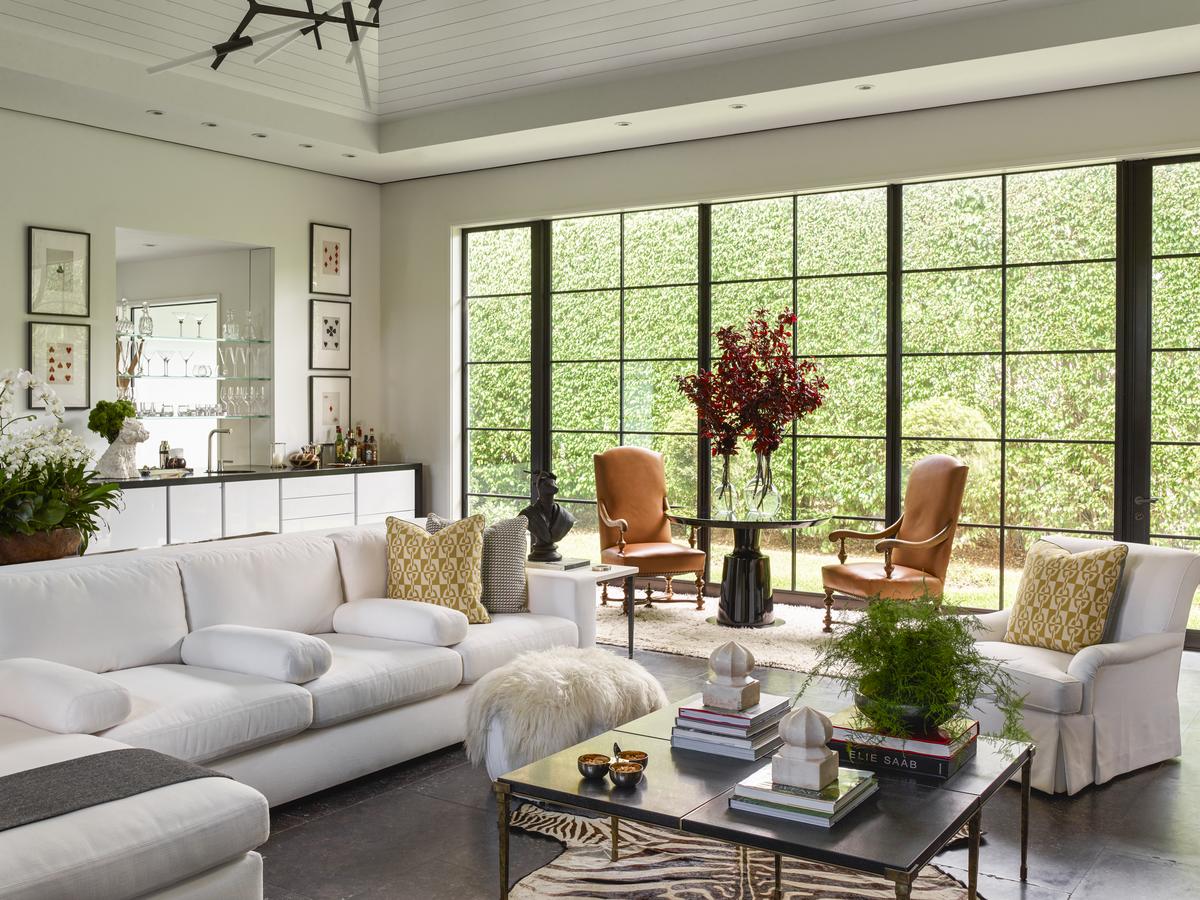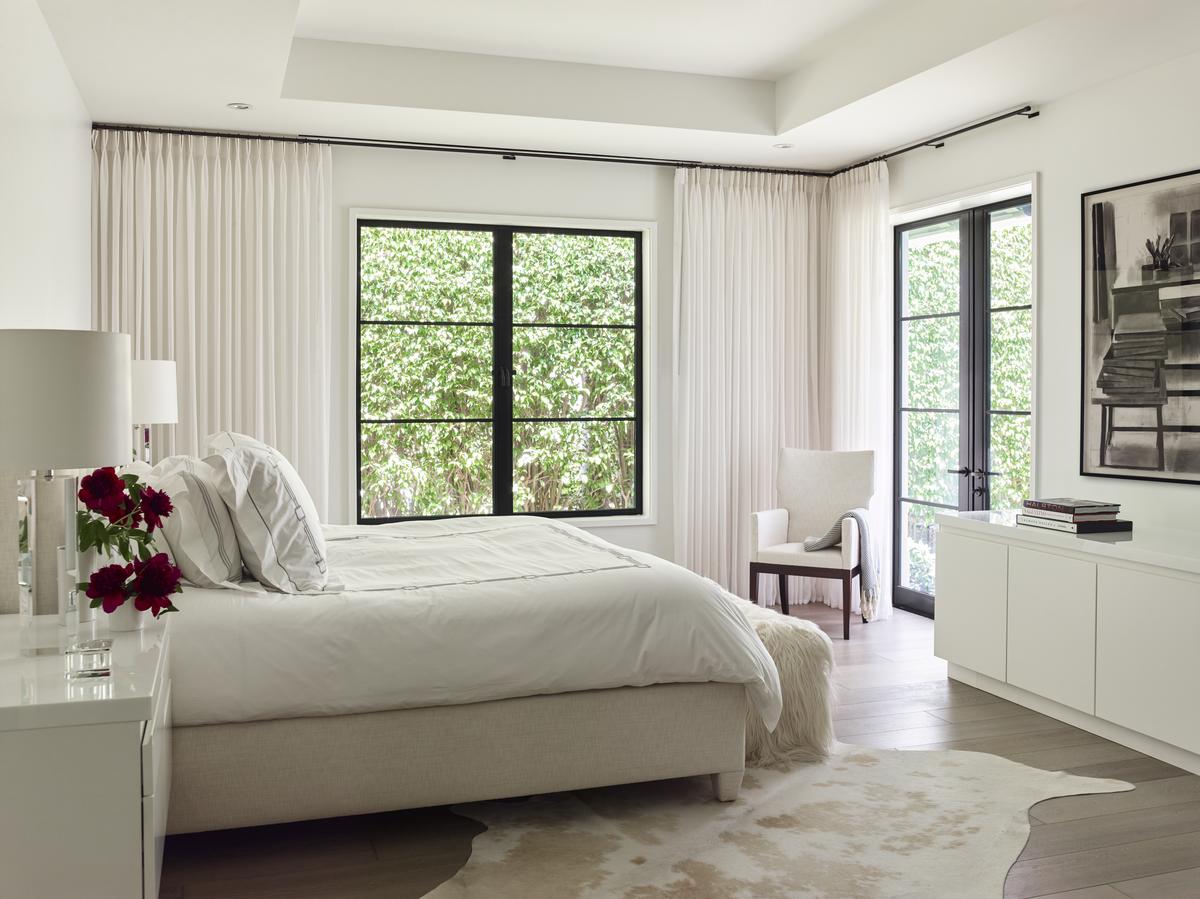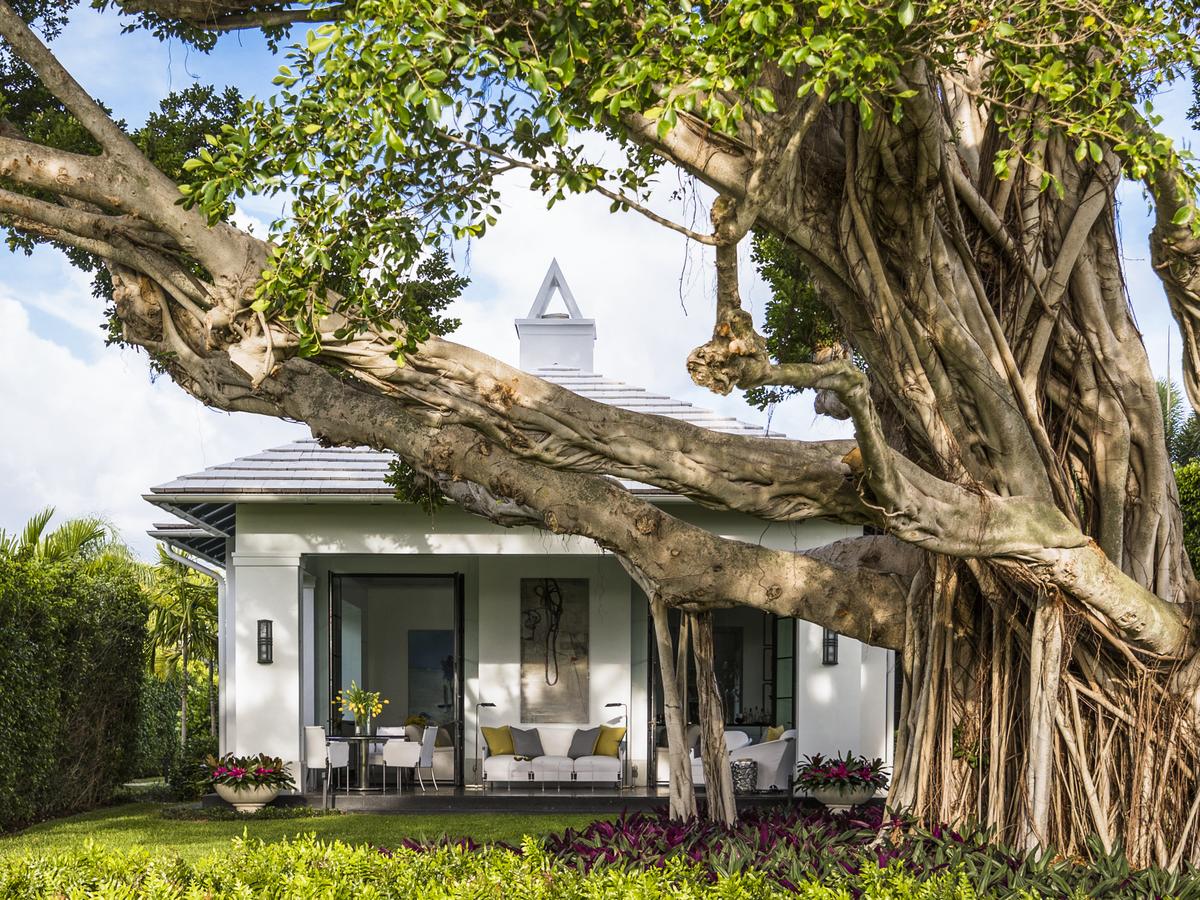If you’ve never seen a mature banyan tree, your first glimpse of one will leave you awestruck. Such a marvel can be found in the yard of this North Palm Beach cottage. Like the 20-foot-diameter 60-year-old tree, the house is breathtaking.
“The original goal was for a contemporary, open expression of living,” says interior architect Suzanne Lovell, who collaborated on the project with Carlos A. Bonilla, the architect of record. Lovell had an easy relationship with the homeowners—C. Barry Montgomery and his wife, Shauna—having worked with them on five other residences.
The socialite couple (he’s an international litigation attorney and she’s a former fashion model) have owned a cottage in this spot for decades and had total confidence in Lovell masterminding a new home for them here, on the first fairway of an exclusive golf course that Jack Nicklaus designed.
Not much more than 3,000 square feet, the modestly proportioned home nevertheless offered its interior architect several opportunities to not only make it seem more spacious, but to also offer it as an archetype of restrained elegance.


Letting the house breathe, so to speak, was Lovell’s charge and she rose to the occasion by first creating a sense of airiness in every direction. Vertically, the ceiling rises to a 24-foot peak above the great room, and 10-foot steel-framed Hope’s doors trump the standard height of such entrances by a full yard. “In residential architecture and interiors,” says Lovell, “raising doors is the one move you can make that absolutely enhances the size of the space.”
Lovell pushed the boundary of the house’s horizontal plane by extending the large-slab petit granite limestone floor of the great room all the way out to the loggia, a generous perch for lounging and dining that overlooks the majestic banyan and the 18-hole golf course.
Indoors meets outdoors again in a north-facing seating area of the great room where an entire wall of floor-to-ceiling Hope’s windows open onto a tall, green ficus hedge and boxwood topiaries. “Instead of facing the golf course and leaving it at that, I felt we should open up this side of the house so it would be more than just a square box,” says Lovell. “Now, you feel like the yard is part of the house.”


Likewise, the relationship between the house and nature is expressed by the materials and fine art sourced by Lovell. A sculptural, oversized piece of driftwood in the main entry sits on a raised platform of petit granite strewn with shiny black stones.
New England artisan Jonathan Kline’s tall, torso-shaped towers woven from black ash flank the opening to the great room, where a custom 24-light chandelier by Lindsey Adelman brings to mind a network of articulated tree branches. Chosen to be timeless and comfortable, the furniture includes armchairs and a Lovell-designed sofa in white perennials outdoor fabric around a cocktail table topped with Absolute Black granite.
The home’s aesthetic—simple, layered, and clean—also has a modern-meets-traditional vibe expressed, in one instance, by the great room’s vaulted ceiling. The decision to use white paint with a slight sheen is a contemporary touch that “invigorates the classic shiplap,” notes Lovell.
Further, she says, an antique English wall clock that the homeowners have brought with them to each of their residences “brings credibility to the contemporary environment.” No matter how modern her work, Lovell typically incorporates something historic to ground it.


The relatively compact size of the cottage (there are two bedrooms and two baths) also called for an ingenious marriage of efficiency and elegance when it came to the kitchen. Running along one wall of the great room, a full chef’s kitchen is “camouflaged” in such a way that it’s completely hidden from view when not in use. Here, polished lacquer cabinetry is accented by white opaque glass panels and embraced by polished petit granite waterfall counters.
Both the sink, with a retractable faucet, and burner-less induction cooktop are seamlessly integrated into the countertop. A refrigerator panel with a touch latch virtually disappears into the high-sheen lacquered walls, as do the cabinets that house a coffee station and pantry.
Lovell often uses the word “magical” when she talks about this enchanting jewel box of a home.
“[The homeowners] have a specific look—clean and elegant—and they hold on tightly to it,” says Lovell. “The two of them together have a great dynamic that I love.”
For more inspiration, visit suzannelovellinc.com.


